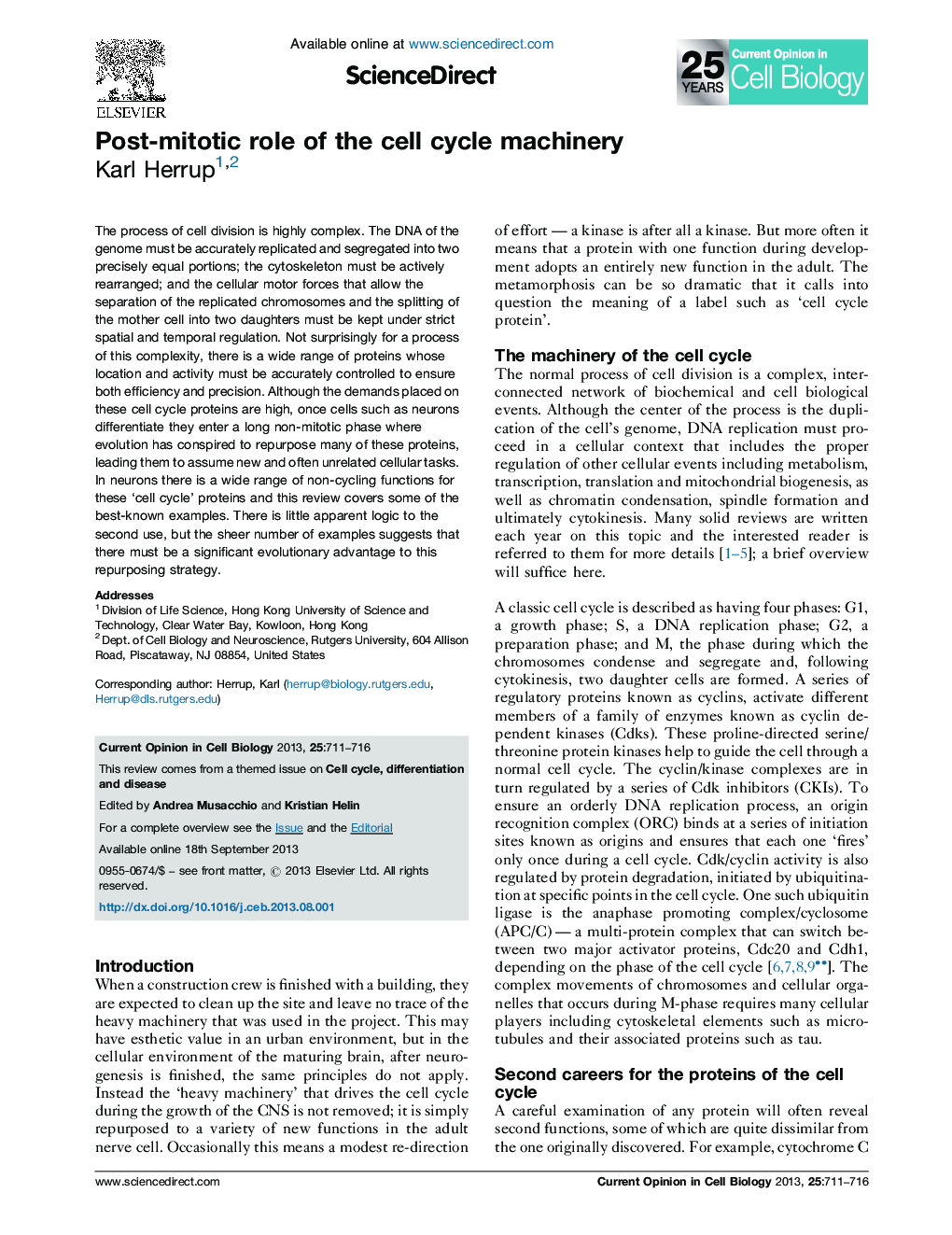| Article ID | Journal | Published Year | Pages | File Type |
|---|---|---|---|---|
| 2169866 | Current Opinion in Cell Biology | 2013 | 6 Pages |
The process of cell division is highly complex. The DNA of the genome must be accurately replicated and segregated into two precisely equal portions; the cytoskeleton must be actively rearranged; and the cellular motor forces that allow the separation of the replicated chromosomes and the splitting of the mother cell into two daughters must be kept under strict spatial and temporal regulation. Not surprisingly for a process of this complexity, there is a wide range of proteins whose location and activity must be accurately controlled to ensure both efficiency and precision. Although the demands placed on these cell cycle proteins are high, once cells such as neurons differentiate they enter a long non-mitotic phase where evolution has conspired to repurpose many of these proteins, leading them to assume new and often unrelated cellular tasks. In neurons there is a wide range of non-cycling functions for these ‘cell cycle’ proteins and this review covers some of the best-known examples. There is little apparent logic to the second use, but the sheer number of examples suggests that there must be a significant evolutionary advantage to this repurposing strategy.
